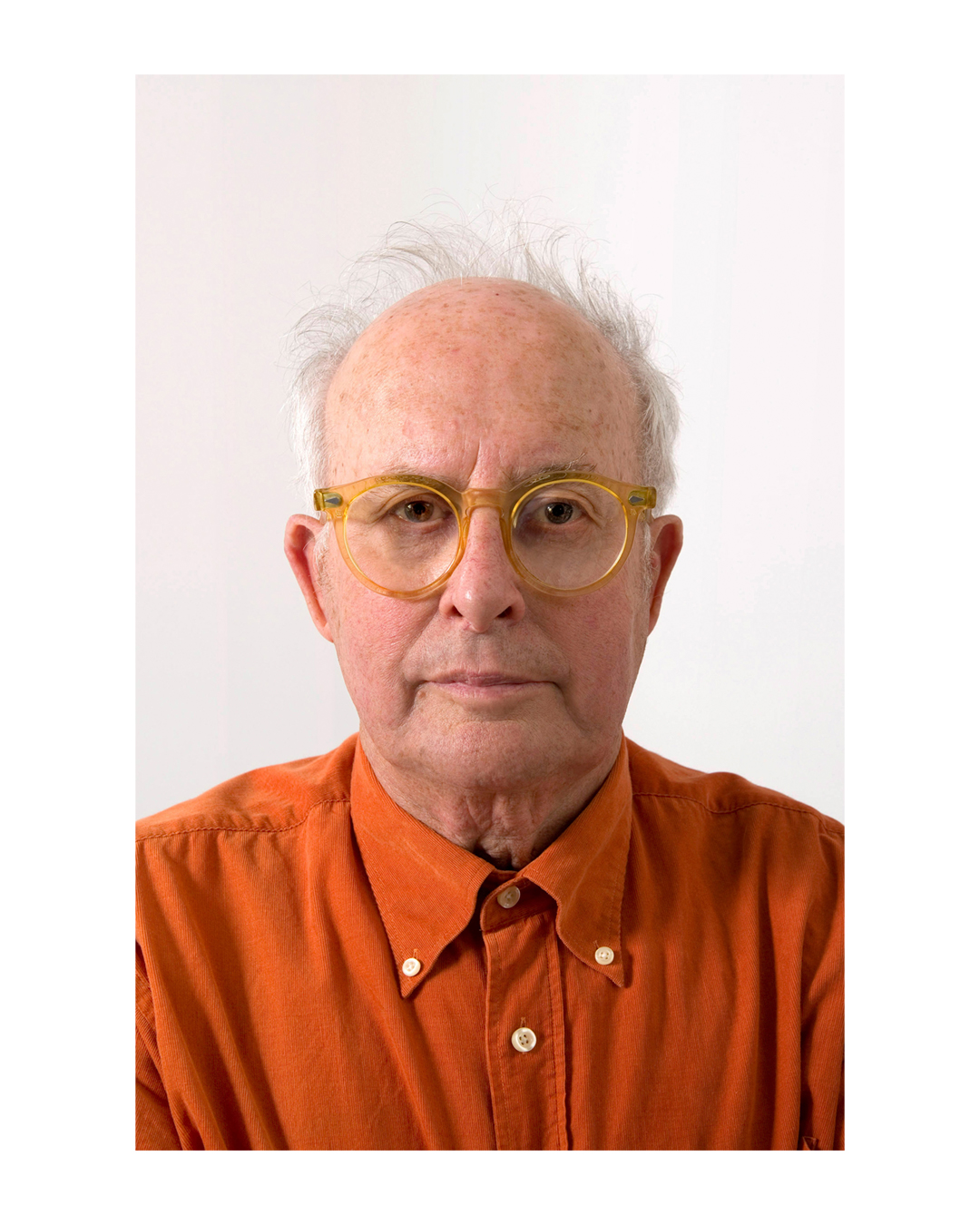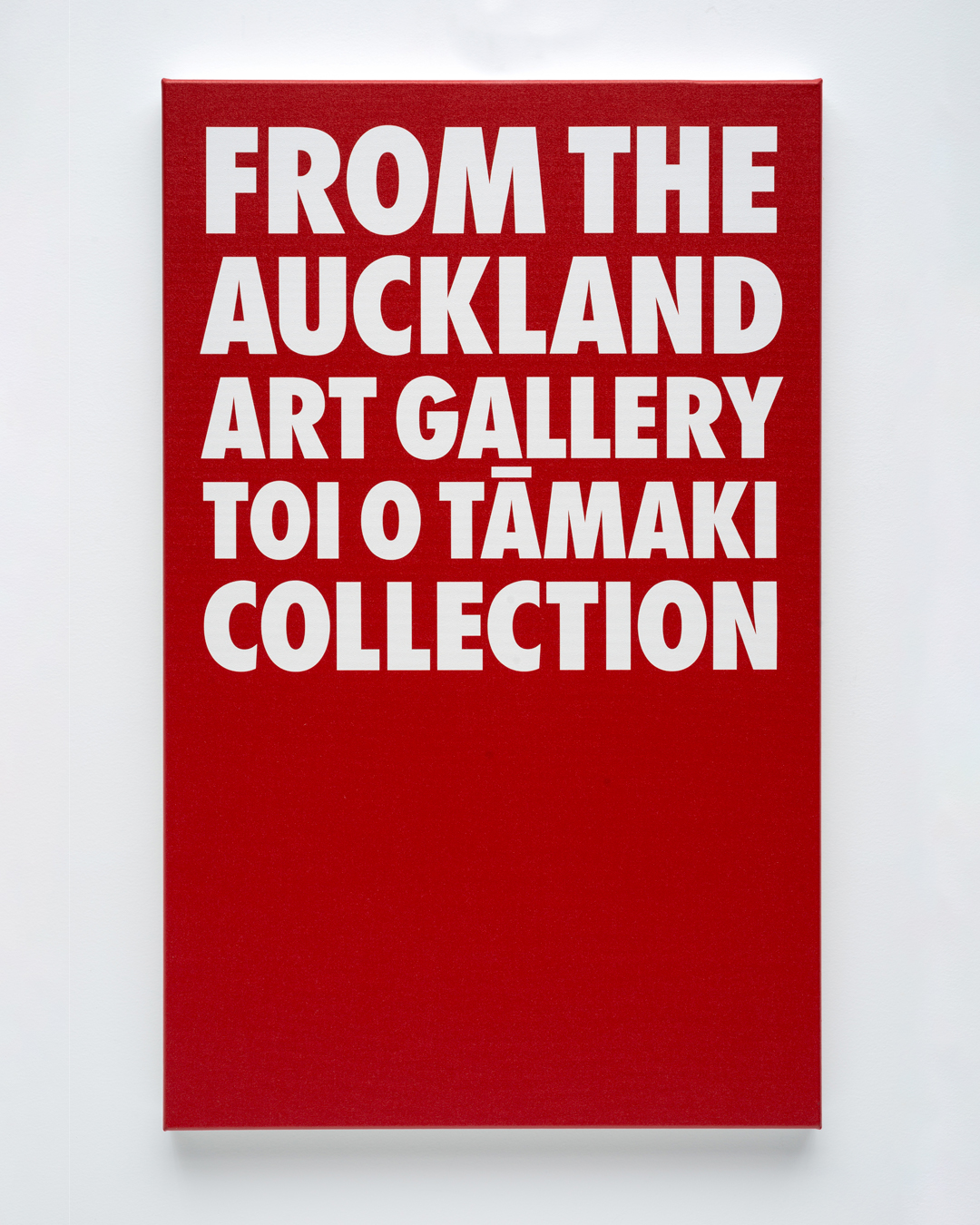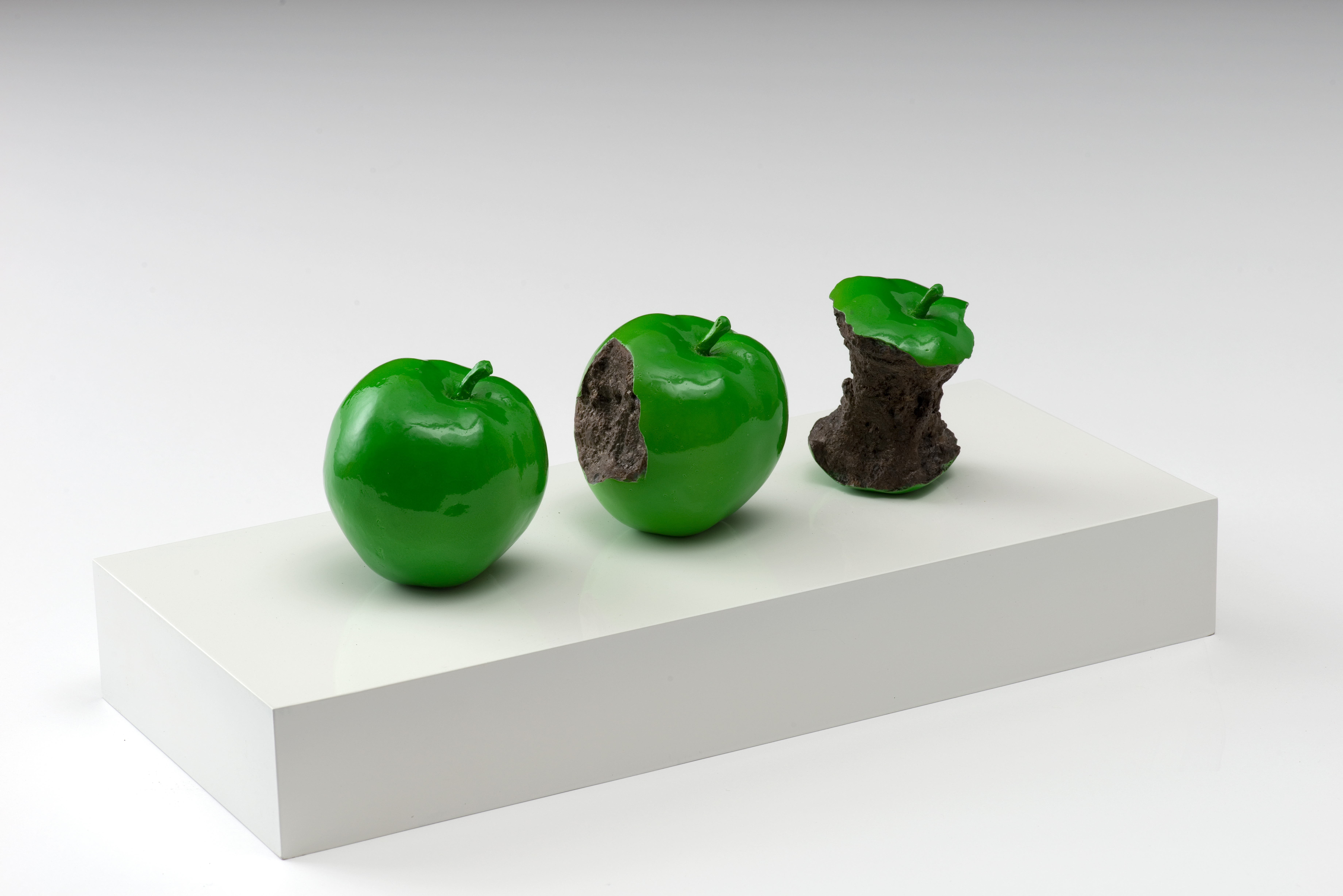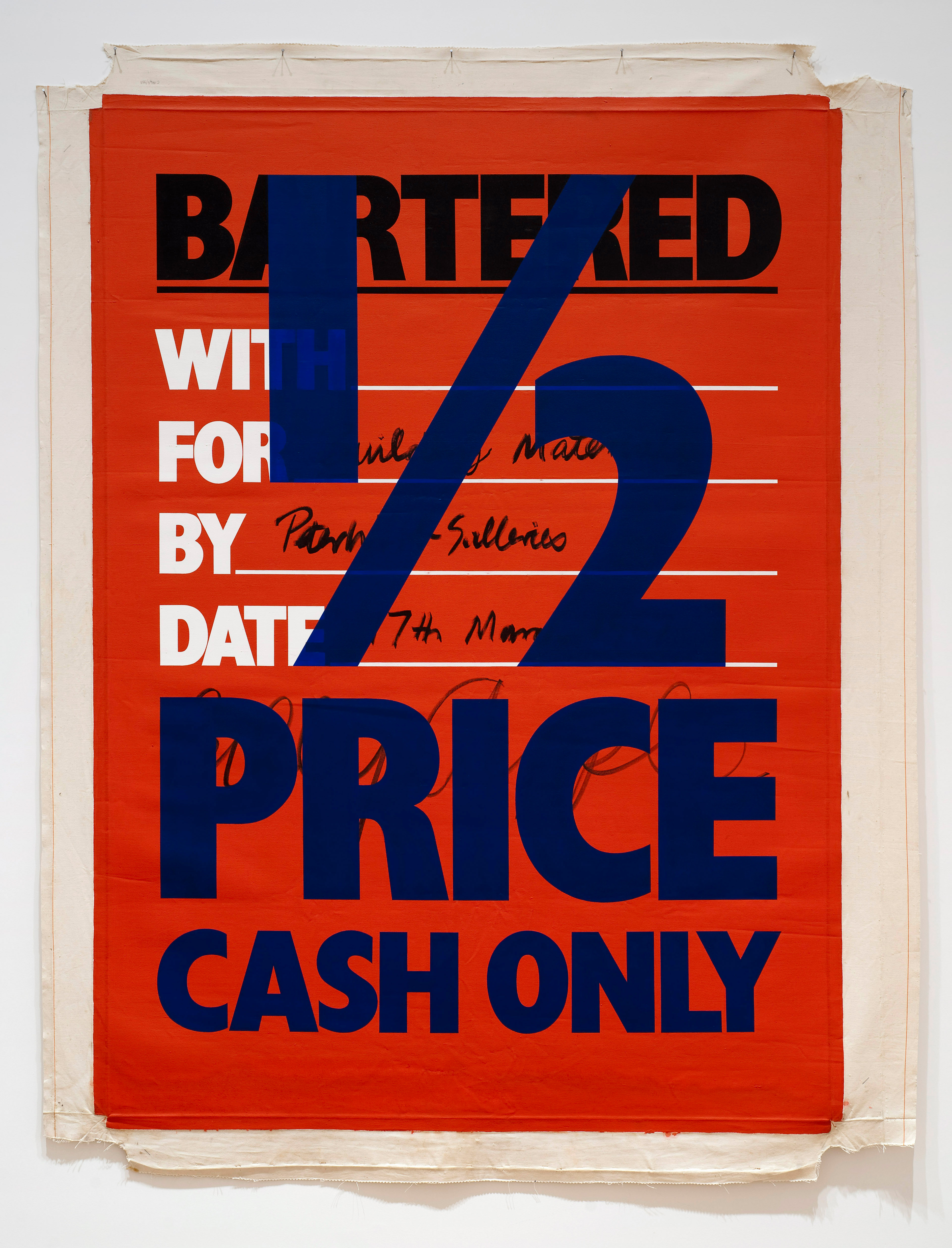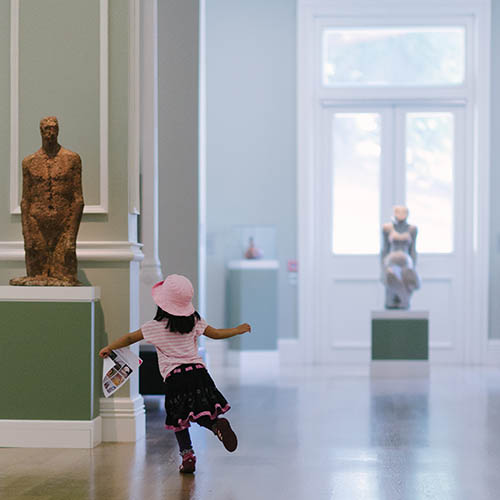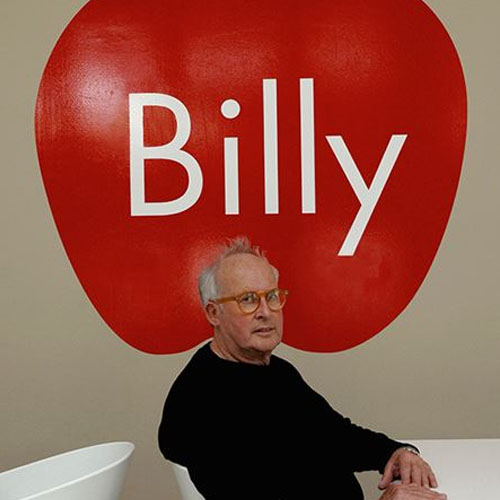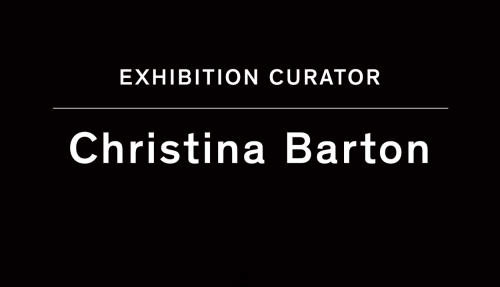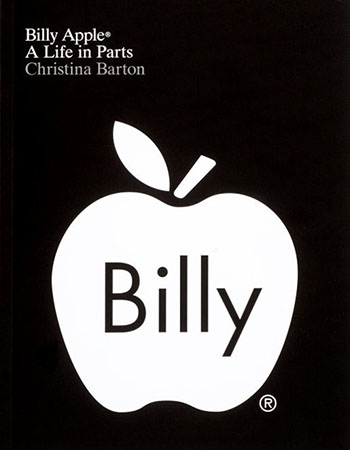From Barrie Bates to Billy Apple
Apple’s biography traverses key moments in the New Zealand, British and New York art scenes. Firstly, in the 1960s, as a student at the Royal College of Art and an artist during the ‘third wave’ of British Pop. Then, in the 1970s, as Apple catches the growing expansion of American Pop and exhibits alongside many key figures in this period. Through exhibitions such as The American Supermarket at Bianchini Gallery in 1964, his work connected with a critical moment in which the boundaries between art and the marketplace were in question. From this point, and towards the close of the decade, Apple reformed himself within a period of heightened experimentation at APPLE Gallery into a largely process-based artist whose actions of life entered into his art. His 1980s’ canvases reveal the behind-the-scenes of the art market, a system he continued to test into the new millennium demonstrating how art infiltrates life.
Bastion of British Pop, Lawrence Alloway, once rejected Apple’s highly conceptual painting of an empty artwork label for exhibition. Although Young Contemporaries 1962, 1961 was the poster for the 1962 Young Contemporaries exhibition at the Royal College of Art, Alloway couldn’t quite foresee it as a legitimate work of art.
For me, this still stands as one of the great Apple works. It’s effectively an open ticket for entry into the world as an artist, saying ‘please sign here’ and once you have signed, you’re now part of this world, an ‘artist’. The following year, he would emerge as Billy Apple and begin the brand in development as in life.
It’s hard to imagine an artist with a broader contribution, creating fluidity around the acceptable boundaries of art, design and ‘ideas-based’ practice. Using an ad-man’s vernacular, Apple worked smartly to ‘grab attention’ in the manner of his peer-in-neon, artist Bruce Nauman. It’s wonderful to see pages and pages of social media fill with anecdotes, personal testimonies and, most of all, tributes to this artist and his life’s work.
